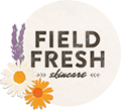
Summer is at its fragrant height. Many plants contain essential oils, these are comprised of the volatile scent compounds important not just for attracting pollinators (and us) but also their means of communicating and healing.
Some of our five herbs to look out for this month have ‘officinalis’ in their latin name (and one was historically an officinalis, though now reclassified). When you see this in a name it’s an indicator that they are historically part of the official Materia Medica – that’s the apothecary’s list of plants with medicinal uses. So they don’t just look good and smell good, they also do you good.

1. Lemon balm, Melissa officinalis
You only need to brush past lemon balm to get a burst of her lemony freshness. At this time of year those bright green leaves are accompanied by tiny white flowers too, adding to her perkiness. She is a tonic against depression, long considered to mend broken hearts. While the volatile oils instantly brighten the air, they are difficult to capture long term. Make the most of them fresh – lovely in a bath or foot bath for that herby, lemony scent – or create a herbal water through distillation. Lemon balm was the main ingredient in Carmelite water, the perfect scented toner to splash on after a bath for a little medieval magic.

2. Marshmallow, Athaea officinalis
Althaea comes from the Greek altha ‘to cure’ so if you think marshmallow is all about smores and stickiness, know she’s also great to soothe and soften – internally and externally. Her velvety soft leaves and stem mimic the softeness she brings to our skin through her moisturising and conditioning properties. In our Marshmallow Dream Cream the aerial parts (the flowers and leaves) are infused in water while the mucilaginous root is infused in oil, bringing the two back together creates the most caring night cream to help your skin’s natural overnight restoration.

3. Honeysuckle, Lonicera caprifolium
Catch her scent on the evening air and you will dream sweetly. As Titania said in Midsummer Night’s Dream: ‘Sleep thou, and I will wind thee in my arms. So doth the woodbine the sweet honeysuckle gently entwist.’ With light nights we need all the help we can get to sleep. Honeysuckle is also an aid to skin, in a cleanser or lotion she will help rid skin of impurities leaving a soft and clear complexion.

4. Mullein, Verbascum thrapsus
Mullein is a wanderer, appearing where she pleases. First you’ll notice her fluffy leaves, like rabbit’s ears; then you’ll see her talk flower spikes and the yellow blooms travelling up the stem. Traditionally used to relieve a cough (in an infusion or smoked – yes, this is one time smoking can do you good), for skincare those leaves and flowers can be infused in oil to bring soothing, softening and anti-inflammatory benefits to your blend. Her natural tannins are wrinkle-fighters, use for dry or bruised skin to bring healing and uplifting.

5. Lavender, Lavendula augustifolia
Lavender is one of the most widely used cosmetic herbs, especially for its essential oil with which it is highly generous. It’s an astringent herb, so good for oily skin and it is refreshing in this heat to splash lavender water on forehead, temples and the back of your neck. She is well known for her stimulating, mood-elevating properties, along with her sedating and calming properties, helping us sleep. As an antiseptic she makes a great, while gentle, addition to a blend for cleansing and healing skin.
LIKE THE IDEA OF GATHERING YOUR OWN SKINCARE INGREDIENTS? …
… you might like to read some more.
For everything you need to know to get started with Blend-it-Yourself skincare using the plants that grow around you, see Vital Skincare by Laura Pardoe. This book takes you through the techniques and ingredients you’ll need to know to make your own natural skincare.
